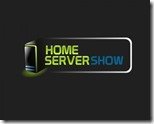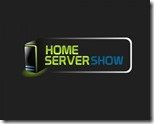A Case Study Running WS2012 R2 Essentials
Microsoft Case Studies highlights Windows Server 2012 R2 Essentials running on a HP ProLiant MicroServer at eHouse Informations technologie GmbH, an IT solutions provider.
And an interesting read it is too.
Microsoft Case Studies highlights Windows Server 2012 R2 Essentials running on a HP ProLiant MicroServer at eHouse Informations technologie GmbH, an IT solutions provider.
And an interesting read it is too.
John Stutsman has posted the remaining videos in his 4 part series in installing WHS2011 on the HP Gen8 MicroServer.
John starts off by preparing the server, then installing. Next up is array performance followed finally by performance testing.
All four parts are available from here.

Its that time for another episode of the Home Server Show podcast:
This one has a little of everything. I wandered through the hard drive aisle in Fry’s and came out with a Desktop drive but is it what I expected? I dive back into my Server 2012 Essentials R2 build and what it needs. I’ll go over the apps running on it and talk to Jim about a plan to migrate from 2011 to R2. It’s just an hour but it’s packed!
Episode 254 can be found here.
If you would like your WS2012 R2 Essentials Server not to do DNS and instead continue using your router for the task then Robert Pearman has a script for that.
Rob has uploaded his script to the TechNet Gallery, whilst more info on what the script does can be found here.
John Stutsman has another series of videos for us and this time its on WHS2011 on the HP ProLiant Gen8 MicroServer.
The first video in a series of four shows us how he has prepared the Gen8 for a Windows Home Server 2011 install.
John’s video and notes can be found here.
UPDATE: Video 2 on installing WHS2011 on the HP ProLiant Gen8 MicroServer can be found here.
We have mentioned them before but if you haven’t heard, then the Microsoft Virtual Academy have 7 training modules dedicated to Windows Server 2012 R2 Essentials.
And once you have done that there is also the TechNet Virtual Lab on Windows Server 2012 R2 Essentials which will enable you to experience the product using a cloud based private virtual machine environment, which you can find here.
Update from the Windows Server Essentials and Small Business Server Blog.
Synology have issued a fix for Diskstation Manager which fixes a vulnerability.
Here’s the press release with the details on how to get the latest release:
Synology® Fixes Vulnerability in DiskStation Manager
Taipei, Taiwan—February 14, 2014—Synology® confirmed known security issues (reported as CVE-2013-6955 and CVE-2013-6987) which would cause compromise to file access authority in DSM. An updated DSM version resolving these issues has been released accordingly.
The followings are possible symptoms to appear on affected DiskStation and RackStation:
- Exceptionally high CPU usage detected in Resource Monitor:
CPU resource occupied by processes such as dhcp.pid, minerd, synodns, PWNED, PWNEDb, PWNEDg, PWNEDm, or any processes with PWNED in their names- Appearance of non-Synology folder:
An automatically created shared folder with the name “startup”, or a non-Synology folder appearing under the path of “/root/PWNED”- Redirection of the Web Station:
“Index.php” is redirected to an unexpected page- Appearance of non-Synology CGI program:
Files with meaningless names exist under the path of “/usr/syno/synoman”- Appearance of non-Synology script file:
Non-Synology script files, such as “S99p.sh”, appear under the path of “/usr/syno/etc/rc.d”If users identify any of above situation, they are strongly encouraged to do the following:
- For DiskStation or RackStation running on DSM 4.3, please follow the instruction here to REINSTALL DSM 4.3-3827.
- For DiskStation or RackStation running on DSM 4.0, it’s recommended to REINSTALL DSM 4.0-2259 or onward from Synology Download Center.
- For DiskStation or RackStation running on DSM 4.1 or DSM 4.2, it’s recommended to REINSTALL DSM 4.2-3243 or onward from Synology Download Center.
For other users who haven’t encountered above symptoms, it is recommended to go to DSM > Control Panel > DSM Update page, update to versions above to protect DiskStation from malicious attacks.
Synology has taken immediate actions to fix vulnerability at the point of identifying malicious attacks. As the proliferation of cybercrime and increasingly sophisticated malware evolves, Synology continues to devote resources to mitigate threats and is dedicated to providing the most reliable solutions for users. If users still notice their DiskStation behaving suspiciously after being upgraded to the latest DSM version, please contact security@synology.com.

The latest episode of the Home Server Show podcast is about moving from Windows Home Server 2011 to Server 2012 Essentials R2:
If you have ever thought about running Windows Server 2012 Essentials R2 this is the show for you. Especially if you are on Windows Home Server 2011. I’m talking pro’s and con’s with Jim Collison, Christopher Courtney, and John Zajdler. I got a little long winded about my build but otherwise this is one of the more enjoyable shows for 2014
A great episode which you can find here.
Drive Bender have released version 2.0.3.0 of the beta release of Drive Bender:
You can download this beta release from here.
If you would like to deploy Windows Server 2012 R2 Essentials in an existing Active Directory environment then there are some steps you will need to follow.
Luckily for us, the Windows Server Essentials and Small Business Server Blog have outlined these steps, to make it easier for us.
The comprehensive instructions can be found here.